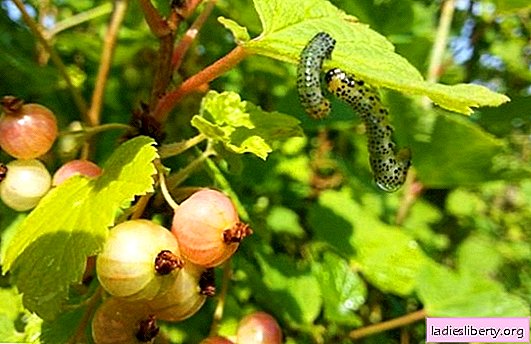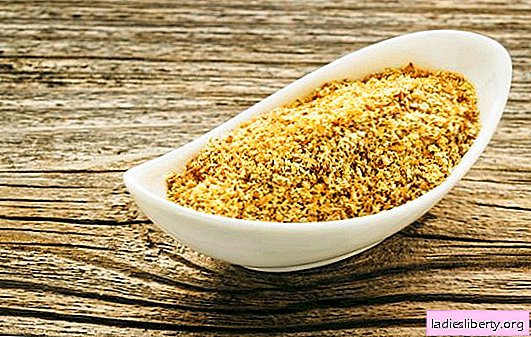
It happens like this: a child wakes up in the morning and complains about the neck.
And it just dried out a little while sleeping and instantly “passes” after a cup of tea or warm milk. And no lethargy, temperature, and all that, why the mother comes in an anxious state ...
Sore throat has many causes. For the most part, when using modern methods and drugs, they are not at all dangerous. But it’s better not to neglect the advice of a doctor. At least when the baby has a sore throat.
Causes of Sore Throat in Children
• Bacterial infections: pharyngitis and tonsillitis (tonsillitis).
They are on the first place in the list of pathogens, in which the child feels a sore throat. Do not try to diagnose yourself if there is no laboratory at home: the presence of a bacterial infection can be established only with a smear and culture in a clinical setting. Such an analysis determines not just the presence of the infection, but the degree of how it is "susceptible" to antibiotics. (In other cases, to feed a child with antibiotics is a waste of drugs and children's health, because this group of drugs leaves the body not the most pleasant mark).
Pharyngitis affects the mucous membrane of the larynx, and tonsillitis, aka angina, nests on the tonsils. The last bacterial enemy is perhaps the most insidious. The initial symptoms of a sore throat are very similar to the signs of another disease - mononucleosis. He, in turn, is also an acute infectious disease, also affects the pharynx and lymph nodes. But the consequences of mononucleosis are much more serious than that of a simple sore throat. His "traces" in the body remain forever and relate to the liver and spleen, changes in the composition of the blood. This disease, the incubation period of which varies from 10 to 21 days (usually 10), is determined only in laboratories, and confirmed cases of the disease can cause panic in the local sanitary epidemiological station and quarantine the patient for a long period. Adults are rarely susceptible to this ailment: by the age of 25, most have already developed antibodies. But adolescents (girls 14-16 years old and boys 16-18 years old), and also, a little less often, kids are at risk.
• Viruses.
It's a shame to realize this, but different pathogens can provoke the same disease. So, you can "catch" and a viral sore throat, and viral pharyngitis. Recognizing the virus is not so difficult: body aches, lethargy, weakness, easy fatigue, sore throat grows gradually, and the temperature rises.
• Irritation of the mucous membrane of the throat.
This is just one of those cases where the sore throat of a child is able to cure mother's tea. But more complex situations mean that there may be allergic reactions, the effects of polluted or dried air, as well as tobacco smoke.
• Laryngitis.
Sometimes a barking cough is added to a sore throat. You should not fall into despair and sign the verdict to the lungs and the bronchial tubes of the child. This is banal laryngitis, inflammation of the larynx with the transition to the vocal cords - the disease is less dangerous than most viruses, if, of course, the treatment is taken on time and correctly.
The causes of laryngitis, as a rule, are two: viruses or excessive stress on the vocal cords the day before. For example, the kid went to football with his father and “was sick” so loudly that he got sick the next morning.
Particular attention should be paid to laryngitis in the smallest: their larynx is narrow and long, and such a cough is dangerous attacks of breathlessness. Laryngitis cough is a false croup, which medicine successfully copes with in the 21st century, to which help you will undoubtedly turn.
Home diagnosis: the child has a sore throat.
Each of the reasons has its own characteristic signs, according to which you can tentatively guess the diagnosis while you wait for the doctor. All diseases of the throat have both common symptoms, and fundamentally different.
For example, sore throat is observed with pharyngitis and laryngitis. But in the first case, when swallowing, the pain "gives up" in the ear, and in the second - no.
• Angina - This is a sore throat and head, body temperature up to 38 degrees inclusive, worsening of sleep and appetite.
• Pharyngitis - It is tickling and sore throat when swallowing, which is transmitted to the ears, cough is possible.
• Infectious mononucleosis - pain to the head, joints, muscles, and also in the throat when swallowing, weakness and inflammation of the lymph nodes.
• Laryngitis - dryness, burning, sore throat, and later - coughing, wheezing, hoarseness.
• Diphtheria pharynx (acute infectious disease) - severe sore throat, fever, tonsils and mucous near them are covered with yellow bloom, weakness. Accurate diagnosis - only by laboratory smear!
• Common cold - A long sore throat, rich red mucous membrane of the larynx, sometimes a runny nose, cough, headache.
• Adenoiditis (inflammation of the adenoids) - constant pain in the throat, breathing problems, sometimes snoring in a dream, “gundos” pronunciation and frequent deep sighs. Throat pain from adenoiditis in infants is dangerous attacks of arrhythmia and tachycardia.
Diagnosis: how doctors check why a child has a sore throat
Diagnosis includes, in addition to the initial examination, instrumental and laboratory methods for determining the problem.
Primary inspection.
The doctor examines the mucous membrane of the patient's neck for typical signs of a disease. Sometimes this inspection is enough.
Instrumental diagnostics.
As a rule, this is a laryngoscopy using a laryngoscope (probe) with a tiny video camera - the most accurate way of visual diagnosis.
Laboratory diagnosis.
Includes general blood count, nasal and throat swabs. A blood test shows the level of leukocytes and, as a result, the degree of inflammation, and smears allow us to determine the composition of the microflora and the type of pathogen bacteria.
Sore throat in a child: how to treat?
Having bought half the pharmacy assortment, think for a minute: what of this did the doctor prescribe to you? And is it worth poisoning your beloved child with a number of pills, whose healing effect is confirmed only by television advertising?
In addition to complex bacterial cases, it is usually a symptomatic treatment. That is, you relieve the pain in all sorts of ways and wait for it to pass for good. The choice of means is great.
Aerosols (sprays)
Most sprays are easy to use and act locally, combining anti-inflammatory and analgesic effects, concentrated in the inflamed area itself.
Read the instructions carefully! It is too early to take some drugs to a one-year-old baby, and others to a four-year-old. Be sure to shake the sprays before use.
• Aqua Maris Spray for Sick Necks washes away bacteria and viruses with seawater. Reduce inflammation without the use of chemicals. Approved for use from 1 year.
• Miramistin - a new generation antiseptic without dyes and preservatives. It warns and treats not only bacterial and viral, but also fungal infections from birth.
• "Bioparox" - a high-quality local antibiotic for the treatment of pharyngitis, laryngitis, tracheitis, tonsillitis from 2.5 years.
• "Tantum Verde" - with viral pharyngitis, you can take up to two weeks.
• "Ingalipt" - a reasonable mixture of chemistry and homeopathy. Do not take longer than 5 days.
• "Lugol" - it was them who our mothers smeared on our throats by winding cotton on a stick. Since then, the tool has not become worse, and the shape of the spray has made the process only more convenient.
• "Hexoral" - they can irrigate the sore throat twice a day after meals, if the doctor has not ordered to do it more often.
Tablets and lozenges for sucking
These are antiseptics, antiviral, antimicrobial agents in a tasty shell - they treat and relieve pain in a sore throat. They are usually prescribed for pharyngitis, laryngitis, tonsillitis, tonsillitis and even tracheitis.
• "Grammidin children" - candy with the antibiotic gramicin and anesthetic lidocaine supplemented with eucalyptus oil and menthol.
• Children's Strepsils is also a local antibiotic with strawberry or lemon flavor. Not recommended for children under 6 years old.
• Children's "Faringosept" - intended for the treatment of pharyngitis, struggling with streptococci and pneumococci.
• "Theraflu Lar" is a combination of local antiseptic and anesthetic for children 12 years and older. There is also a spray.
• Lizobak sucking tablets - they are based on a combined antiseptic lysozyme. Enhances the effect of antibiotics taken.
What pills can be eaten to make the neck easier?
It is wiser to give this choice to the doctor who conducted the examination. A medicine for your baby may turn out to be an antibiotic with a systemic effect on the body (Zinnat and Amoxiclav) for a bacterial disease, or homeopathic medicines (Tonsilgon N).
Frequent gargles for a sore throat
Even in our time there is no better way to help a child’s sore throat than rinsing. Rinse the throat better before the kid takes a lozenge or lozenge, otherwise the entire antiseptic effect of the expensive candy will be washed away in the sink. It is recommended to gargle 4 times a day or more often, if, of course, you manage to persuade a sluggish child to such an adventure.
For home rinses that resourceful mothers just do not use! And all these options are good: herbal decoctions of chamomile, thyme, sage, eucalyptus; iodine-salt, soda, honey solutions, as well as mixtures of the above and other components.
And do not forget about the abundant frequent drinking. It is not only that it washes the throat in addition, but it does not allow the body to lose fluid, which means - the forces for recovery!
Steam inhalation when a child has a sore throat
Experienced mothers know: for most of them inhalation is the lot of extremes. Not every child will agree to inhalation, especially if we are talking about "five minutes to breathe over the pan." But, if you still managed to catch a sick baby and put it in front of an inhaler or kitchen utensil under the pretext that the neck will not hurt, then you can use a lot of your home supplies.
For your purpose, chamomile tea, eucalyptus, calendula, oak bark, yarrow, horsetail, succession, marshmallow root, dandelion or other herbs will do. Various essential oils are also good (a few drops per pan), iodine, soda, honey, sea salt, onion, and garlic.
Pour boiling water with the selected ingredient into a wide container, plant the child with the head above the container and cover with a towel - let it breathe a little. But it’s better to buy an inhaler - breathing steam with some models is even fun!
So that the child does not have a sore throat - prevention
• Avoid contact with infectious patients.
• Strengthen your baby’s immune system. Vitamins and sports - to help you!
• Accustom your baby to strict oral hygiene.
• Do not allow your child to supercool.
• Minimize drafts in the house.











